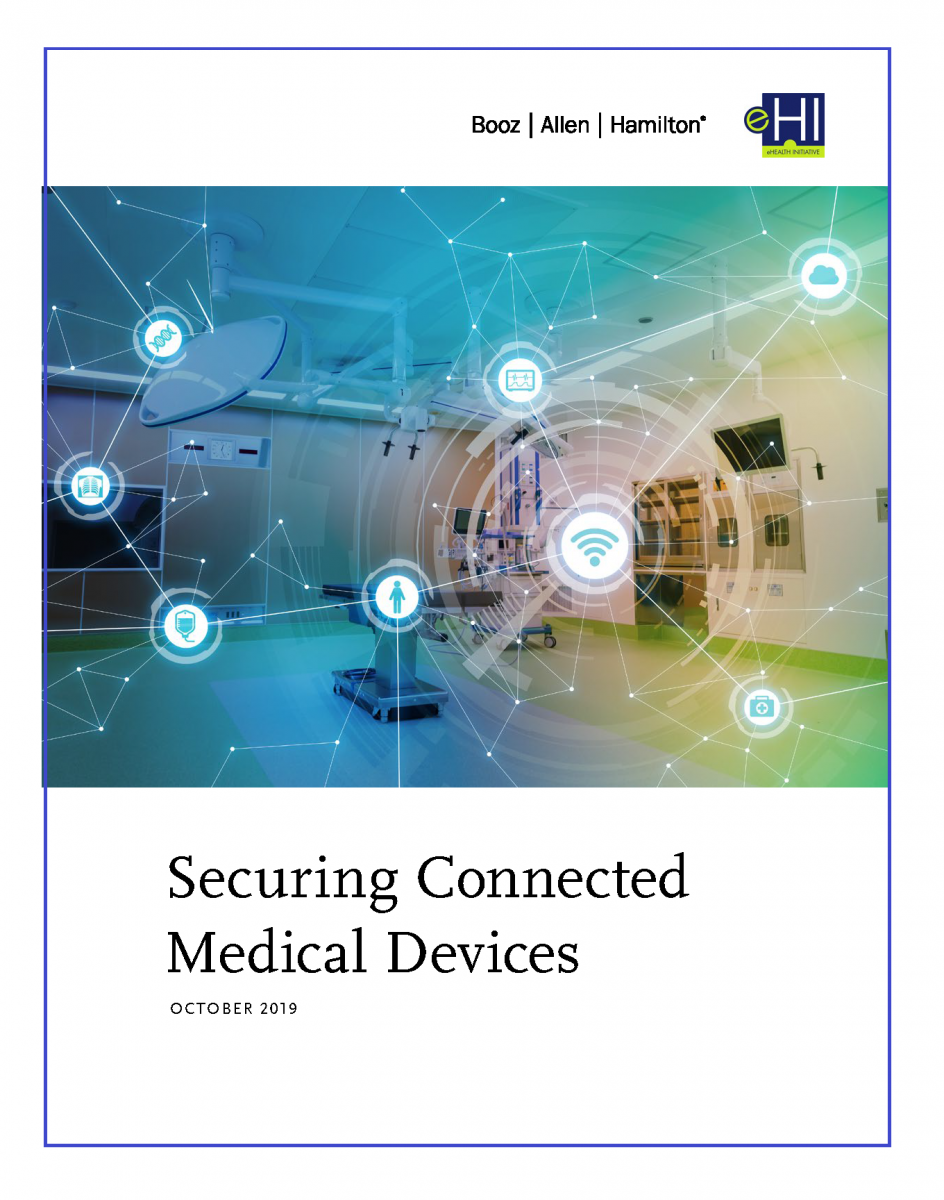Patients’ and public views and attitudes towards the sharing of health data for research: a narrative review of the empirical evidence
Patients’ and public views and attitudes towards the sharing of health data for research: a narrative review of the empirical evidence
International sharing of health data opens the door to the study of the so-called ’Big Data’, which holds great promise for improving patient-centred care. Failure of recent data sharing initiatives indicates an urgent need to invest in societal trust in researchers and institutions. Key to an informed understanding of such a ’social license’ is identifying the views patients and the public may hold with regard to data sharing for health research.
We performed a narrative review of the empirical evidence addressing patients’ and public views and attitudes towards the use of health data for research purposes. The literature databases PubMed (MEDLINE), Embase, Scopus and Google Scholar were searched in April 2019 to identify relevant publications. Patients’ and public attitudes were extracted from selected references and thematically categorised.
Twenty-seven papers were included for review, including both qualitative and quantitative studies and systematic reviews. Results suggest widespread—though conditional—support among patients and the public for data sharing for health research. Despite the fact that participants recognise actual or potential benefits of data research, they expressed concerns about breaches of confidentiality and potential abuses of the data. Studies showed agreement on the following conditions: value, privacy, risk minimisation, data security, transparency, control, information, trust, responsibility and accountability.
Our results indicate that a social license for data-intensive health research cannot simply be presumed. To strengthen the social license, identified conditions ought to be operationalised in a governance framework that incorporates the diverse patient and public values, needs and interests.
The full article can be downloaded below.
WEBINAR: Beyond the EHR: A Data Driven Healthcare System
You collect data from all over, both inside and outside of your organization. Tons of it, in fact. But what can you really do with it when it’s everywhere, unorganized and unfiltered? It’s time to start connecting the information inside all your systems. Join this webinar to hear Geisinger Health System and Hackensack Meridian Health discuss considerations and successes of implementing an EHR- and source-agnostic data and insights platform that sits above the EHR.
Development of a real-time physician– patient communication data collection tool
Development of a real-time physician– patient communication data collection tool
This study highlights the importance of effective physician–patient communication and presents a unique data collection tool to assess and improve physician communication in real time. This tool can provide physicians with personalised feedback and relate specific communication behaviours to patient experience measures to provide high-quality care and improve the patient experience.
The full article can be downloaded below.
Webinar Presentation - Connecting Communities: HIEs and Social Determinants of Health
Slides and presentation from the 11.7.19 webinar
The vast majority of U.S. healthcare dollars and patient care efforts are currently spent on clinical factors and are not addressing the underlying socioeconomic and behavioral factors that greatly impact patient health. These forces, referred to as social determinants of health (SDOH), give providers and health plans meaningful insights into the health of their patient populations. SDOH data, which includes information on housing, income, crime, education, transportation, domestic circumstances, and food insecurity, allows stakeholders to proactively identify and treat those most at risk. SDOH improves both patient and population health by contributing to the complete picture of an individual, identifying populations that are most vulnerable, and facilitating connections with social services and programs that can improve their lives.
This webinar explores:
- SDOH data sources and use across organizations
- Center for Medicare & Medicaid Services (CMS) efforts regarding the use of SDOH
- The role of health information exchanges (HIEs) with SDOH data, including challenges and solutions
SPEAKERS
 Leonides (Lizzy) Feliciano, Vice President, Marketing, LexisNexis Health Care
Leonides (Lizzy) Feliciano, Vice President, Marketing, LexisNexis Health Care
Lizzy brings more than 20 years of HIT marketing experience to LexisNexis Risk Solutions. In her role she is responsible for creating strategies to grow the LexisNexis brand, drive thought leadership and establish innovation-centric messaging frameworks for a broad portfolio of data insights solutions. She has experience working with data, technology, and analytics organizations that deliver solutions impacting patient outcomes, data quality and interoperability. Lizzy holds a BA in Organizational Communication with a minor in Public Relations from Rollins College, and a MBA with a double concentration in Business Management and Marketing from the Crummer Graduate School of Business located in Winter Park, FL.
 Chris Hobson, MD, Chief Medical Officer, Orion Health
Chris Hobson, MD, Chief Medical Officer, Orion Health
Dr. Chris Hobson has global experience in the development implementation and adoption of Health Information Exchange, population health solutions, disease management programs, and innovative value-based models of healthcare delivery. He has over twenty years’ experience in North America, Europe, Middle East and the Asia Pacific region always working in the broad population health space. Prior to joining Orion Health, he developed integrated care strategic projects for a major health system, over three years, in Auckland New Zealand and worked in primary care and internal medicine as a physician for more than ten years. He has broad and deep experience across all areas of Health Information Exchange from business and clinical strategy through product design and development; sales and marketing; implementation, project management and evaluation of health IT projects. Most recently he has been working closely with LexisNexis on ways of integrating SDOH into Health Information Exchange for provider and payor focused HIEs.
 Jordan Luke, M.A.Ec., Director, Program Alignment and Partner Engagement Group, CMS OMH
Jordan Luke, M.A.Ec., Director, Program Alignment and Partner Engagement Group, CMS OMH
Jordan Luke is the Director of the Program Alignment and Partner Engagement Group (PAPEG) at the CMS Office of Minority Health (CMS OMH). PAPEG is responsible for working across CMS programs, policies, models, and demonstrations to ensure that the needs of vulnerable populations are met. He leads the CMS Equity Plan for Improving Quality in Medicare and the Minority Research Grant Program. PAPEG also provides Health Equity Technical Assistance to organizations interested in embedding equity into their policies, programs, and initiatives. Jordan gained cross-cultural experience from living and working abroad for fifteen years in Chile, Mexico, Bolivia, Canada, and the Navajo Nation. Jordan completed his M.A. in Economics from Boston University and B.A. in Psychology from Lee University. His passion for equity was ignited as an undergraduate student, where he led a student group called Deaf Outreach and founded an LGBT group to support sexual and gender minority students. Jordan is a native Spanish speaker and knows intermediate American Sign Language (ASL).
How patient satisfaction scores are changing medicine
How patient satisfaction scores are changing medicine
Healthcare organizations have been using patient satisfaction scores since the late 1980s to improve care delivery and calculate physician and staff bonuses, among other purposes. Now, in the shift toward value-based care, such scoring is playing an even greater role in determining physician reimbursement and helping patients choose a physician.
But is it also changing the way physicians practice medicine?
Physicians, frustrated with feelings of powerlessness over how the scores are determined, fear that they give patients too much influence. Experts say the scores are here to stay, and offer suggestions for ways to approach them in the future.
The full Medical Economics article can be viewed at this link.
Patient Perspectives on Short-Course Pharmacotherapy: Barriers and Facilitators to Medication Adherence
Patient Perspectives on Short-Course Pharmacotherapy: Barriers and Facilitators to Medication Adherence
Medication nonadherence is a public health issue that contributes to poor health outcomes and health-care costs. Factors influencing long-term medication adherence are known; however, little is known about short-course medication adherence.
This study examined patient perspectives on adherence and factors that influence adherence to short-course pharmacotherapy in diarrhea-predominant irritable bowel syndrome.
Twenty-seven participants were interviewed to identify their perceptions of barriers and facilitators to thrice-daily, 14-day rifaximin.
Participants were primarily female (89%), aged 18 to 65 years. Sixty-eight percent of interviewees were identified as “low-adherers,” meaning the percentage of days with correct daily dosing of rifaximin was <80%. The final coding framework identified social/economic-related (family support and medication expense), system-related (relationship with provider and medication knowledge), condition-related (symptom severity), therapy-related (inconvenient dosing), and patient-related (forgetfulness and busyness of daily life) factors that influenced adherence.
The resulting patient perspectives highlight a diverse set of factors that influence short-course adherence and the need for tailored interventions that address these various factors resulting in enhanced patient outcomes.
The full article can be downloaded below.
Urbanization Leaves Rural America In A Health Care Crisis
Urbanization Leaves Rural America In A Health Care Crisis
Declining birth rates and an aging population have impacted American migration patterns for decades. But according to the USDA’s Economic Research Service, between 2010 and 2017, almost 1,000 rural counties in the U.S. recorded more deaths than births. Add in migration patterns of people moving from rural areas of the country to more urban and suburban regions, and we find that in 2019 only 20% of Americans live in rural areas - which accounts for a surprising 97% of U.S. land mass.
But the implications of these population shifts greatly exceed the economic and housing needs of the region. Population change also means significant changes in health care need, demand and access. According to the National Institute for Health Care Management (NIHCM), “As urbanization increases, an older, sicker and poorer population remains in rural America.” What this really means is that those Americans living in rural areas of the country have much greater health issues, and far fewer health resources.
The full Forbes article can be found at this link.
Securing Connected Medical Devices
 eHealth Initiative & Foundation (eHI) and Booz Allen Hamilton, released a joint report, Securing Connected Medical Devices, to help industry stakeholders address the challenges associated with the cyber security of connected medical devices. The rise of connected medical devices – which are devices that connect or integrate with other systems (e.g., other devices, tools, networks, services) – represent significant innovations in patient care. These innovations face new and diverse threats not previously in existence. As soon as a medical device is connected in some way – either wirelessly or wired, using a persistent connection or one that is transient, either one-directional or bi-directional – the medical device becomes much easier to disrupt, and the potential disruption much more severe. The medical device ecosystem is at a critical moment where strong leadership across industry, government, and the public is needed to prepare for a secure connected future.
eHealth Initiative & Foundation (eHI) and Booz Allen Hamilton, released a joint report, Securing Connected Medical Devices, to help industry stakeholders address the challenges associated with the cyber security of connected medical devices. The rise of connected medical devices – which are devices that connect or integrate with other systems (e.g., other devices, tools, networks, services) – represent significant innovations in patient care. These innovations face new and diverse threats not previously in existence. As soon as a medical device is connected in some way – either wirelessly or wired, using a persistent connection or one that is transient, either one-directional or bi-directional – the medical device becomes much easier to disrupt, and the potential disruption much more severe. The medical device ecosystem is at a critical moment where strong leadership across industry, government, and the public is needed to prepare for a secure connected future.
Capturing the patient voice: implementing patient‑reported outcomes across the health system
Capturing the patient voice: implementing patient‑reported outcomes across the health system
Supporting the capture and use of patient-reported outcomes (PROs) at the point-of-care enriches information about important clinical and quality of life outcomes. Yet the ability to scale PROs across healthcare systems has been limited by knowledge gaps around how to manage the diversity of PRO uses and leverage health information technology. In this study, we report learnings and practice insights from UW Medicine’s practice transformation efforts to incorporate patient voice into multiple areas of care.
Using a participatory, action research approach, we engaged with UW Medicine clinical and administrative stakeholders experienced with PRO implementation to inventory PRO implementations across the health system, characterize common clinical uses for PROs, and develop recommendations for system-wide governance and implementation of PROs.
We identified a wide breadth of PRO implementations (n=14) in practice and found that nearly half (47%) of employed PRO measures captured shared clinical domains (e.g., depression). We developed three vignettes (use cases) that illustrate how users interact with PROs, characterize common ways PRO implementations support clinical care across the health system (1) Preventive care, (2) Chronic/Specialty care, and (3) Surgical/Interventional care), and elucidate opportunities to enhance efficient PRO implementations through system-level standards and governance.
Practice transformation efforts increasingly require integration of the patient voice into clinical care, often through the use of PROs. Learnings from our work highlight the importance of proactively considering how PROs will be used across the layers of healthcare organizations to optimize the design and governance of PROs.
The full article can be downloaded below.
eHI Explains ICD-10-CM Coding for Social Determinants of Health

Download this information as 2-page document at the bottom of your screen.
- What is an ICD-10-CM code?
International Classification of Diseases, Tenth Revision, Clinical Modification coding, known as ICD-10-CM coding, is a system used by clinicians to classify and record all diagnoses and symptoms for care within the United States. Codes are based on the International Classification of Diseases, which is published by the World Health Organization (WHO), using unique alphanumeric codes to identify known diseases and other health problems. ICD-10-CM codes provide a level of detail that is necessary for storing and retrieving diagnostic information, compiling national mortality and morbidity statistics, and processing health insurance claims. - What is an ICD-10-CM Z code for Social Determinants of Health (SDOH)?
ICD-10-CM codes include a category called Z codes, which are used to describe experiences, circumstances, or problems that affect patient health, but are not considered a specific disease or injury. Z codes identify patients facing socioeconomic and psychosocial circumstances that may influence their health status and contact with health services. Currently, codes included in categories Z55-Z65 document patients’ SDOH in a standardized manner. - How does standardizing the capture of SDOH data codes benefit population health?
Traditionally, data recorded during a patient visit directly relates to a patient’s health but does not incorporate outside factors that can impact well-being. SDOH data captures information at a level traditional health data sources cannot, and ICD-10-CM Z codes can record this information, giving deeper insights into factors impacting health, such as employment, food insecurity, and housing. Standardizing SDOH would assist in identifying, documenting, and tracking additional markers of health, beyond the physical, and would permit clinicians, hospitals, and health plans to share the information through medical records and insurance claims data. - Are there guidelines for using ICD-10-CM codes for SDOH?
ICD-10-CM diagnosis codes have been adopted under the Health Insurance Portability and Accountability Act (HIPAA) for all healthcare settings. Guidelines for Z codes are included in the Centers for Medicare & Medicaid Services (CMS) ICD-10-CM Official Guidelines for Coding and Reporting for FY 2020. https://www.cdc.gov/nchs/data/icd/10cmguidelines-FY2020_final.pdf - Why should providers, non-physician healthcare providers, and coders use ICD-10-CM Z codes for SDOH?
Utilizing Z codes for SDOH enables hospitals and health systems to better track patient needs and identify solutions to improve the health of their communities. The extraction of SDOH data from the Electronic Health Record (EHR) for clinical, operational, and research purposes can facilitate tracking, identification, and referrals to social and governmental services. Rather than a new system or new tool to capture SDOH, leveraging existing ICD-10-CM codes offers an opportunity to expand on the existing system. This practical application brings SDOH into a clinician’s workflow and becomes a part of the patient’s electronic medical record and claims history. - What are the limitations of ICD-10-CM Z codes for SDOH?
Currently, Z codes for SDOH capture some, but not all, domains of SDOH. Stakeholder groups have requested that the ICD-10 Coordination and Maintenance Committee expand the codes to represent more granular information that would inform more precise, effective, and efficient social interventions, such as “barrier situations” which prevent consumers from obtaining medications and routine and preventive care. Although coding for SDOH is not mandated, when there is documentation of SDOH in the patient’s notes, it is still possible to use Z codes in the same manner that medical coding is done. Coding professionals may not know to scan for SDOH or may be hesitant to use the codes. Additionally, if a code has not been developed for a specific SDOH issue, the issue will not be coded and will not be included in the patient’s overall plan of care, nor as part of the claim submission process, unless it is recorded as narrative text. - Are coding professionals allowed to use non-physician documentation to support ICD-10-CM coding for societal and environmental conditions?
Yes, coding professionals at hospitals and health systems can report these codes based on documentation by all clinicians involved in the care of patients, such as case managers, discharge planners, social workers and nurses. In early 2018, the American Hospital Association’s (AHA) Coding Clinic published guidance that allows the reporting of SDOH ICD-10 codes based on non-physician documentation. The ICD-10-CM Cooperating Parties approved the advice, with the change effective February 2018. - Where can I find more resources and initiatives around SDOH data and ICD-10-CM Coding?
- American Hospital Association (AHA) Information sheet on ICD-10 Coding for Social Determinants of Health
- "Health Disparities: Social Determinants of Health)” (Free online education module by the American Medical Association (AMA)
- AMA’s Integrated Health Model Initiative (IHMI), Resource Link & Link 2
- AMA and UnitedHealthcare’s collaboration to support the creation of new ICD-10 codes related to SDOH
- Centers for Disease Control (CDC) Social Determinants of Health Webpage
- CMS 2020 ICD-10-CM Files
- CMS ICD-10-CM Official Guidelines for Coding and Reporting for FY 2020
- CMS’ Accountable Health Communities Health-Related Social Needs Screening Tool & FAQ
- Healthy People 2020’s Social Determinants of Health Webpage
- Humana Food Insecurity and Loneliness Toolkits
- The National Association of Community Health Centers (NACHC) Protocol for Responding to and Assessing Patients’ Assets, Risks, and Experiences (PRAPARE)
- American Academy of Family Physicians (AAFP)’s EveryONE Project Toolkit
- SIREN’s (Social Interventions Research and Evaluation Network) Gravity Project Resource Link & Link 2
- NCQA Population Health Management Resource Guide
